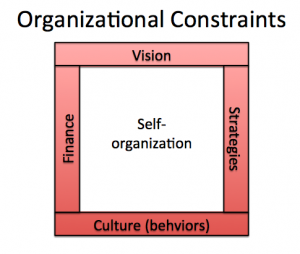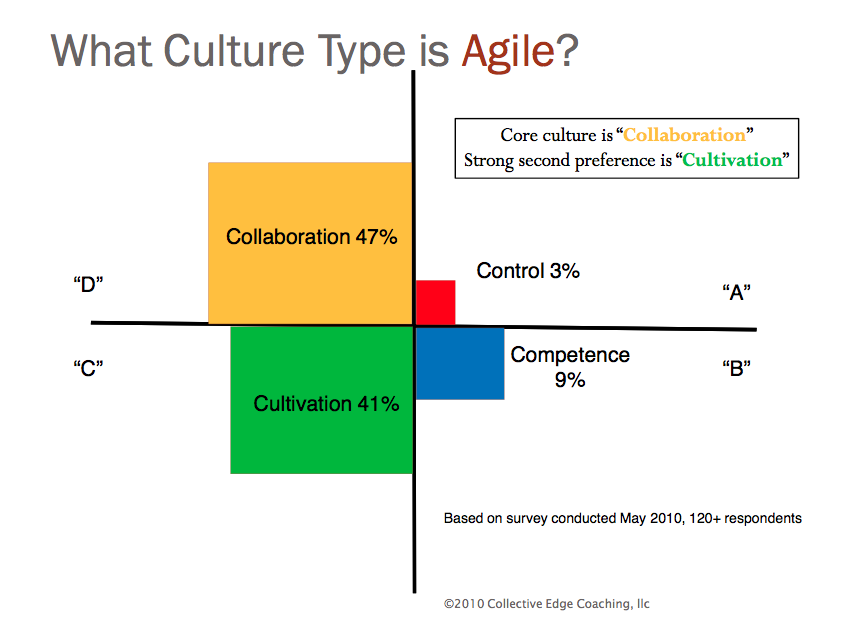 I had the opportunity to facilitate a discussion table at the “Déjeuner-Causerie” in Montreal (last week) and in Quebec City (this week) where over 50 people gathered in each city to share their experience with Agile adoption.
I had the opportunity to facilitate a discussion table at the “Déjeuner-Causerie” in Montreal (last week) and in Quebec City (this week) where over 50 people gathered in each city to share their experience with Agile adoption.
From team self-organization to enterprise self-organization
Before I get into the main topic covered during the 3 hour breakfast, the participants shared with the group their topics of interest. Though the participants were at various stages of their Agile transformation and had different experiences with Agile, they shared common interests and as such asked interesting questions:
- What is self-organization and what does it really mean?
- Can self-organization really work?
- How far can you push self-organization?
- How do you get management on board?
- Can this work in any culture?
- How can people be motivated to work together?
- We are only starting with Agile, what do you recommend I read?
- and many more!
This post is a quick summary of the various conversations. Since most of these topics require further explanation, I will expand on some of them in upcoming posts (and conferences). For now, I wanted to share some of the discussions.
What is self-organization and what does it really mean?
Self-organization is one of the basic pillars of Scrum and is often misunderstood. People (and in particular managers) assume that letting a team self-organize is the equivalent of complete chaos. To avoid getting into such a situation, self-organization requires some constraints.
Self-organization is the process where a structure or pattern appears in a system without a central authority or external element imposing it through planning. This globally coherent pattern appears from the local interaction of the elements that make up the system, thus the organization is achieved in a way that is parallel (all the elements act at the same time) and distributed (no element is a coordinator). - Wikipedia
In his book, Jurgen Appelo wrote,
No self-organizing system exists without context. And the context constrains and directs the organization of the system. - Management 3.0: Leading Agile Developers, Developing Agile Leaders
As I already mentioned, Pyxis is an experimental laboratory and as such we have attempted to let people self-organize without (or with very minimal) constraints. In an upcoming post I can share some of the conclusions of that experiment but for the sake of this post, I’ll leave it as a “failed experiment”.
So back to constraints. In our context, the constraints are as follows:
Though we apply it at an organizational level, the concept of constraints can be applied at an Agile project team level where the Vision is the equivalent of the Agile project charter, the Finance is the equivalent of the project budget, the Strategies can be replaced with the project’s objectives or outcomes, while the Culture remains.
Can self-organization really work?
 Yes, it can but it isn’t easy. Self-organized teams tend to go through various stages and success isn’t immediately achieved. Unless an organization is willing to invest into building a successful team, self-organization won’t really work.
Yes, it can but it isn’t easy. Self-organized teams tend to go through various stages and success isn’t immediately achieved. Unless an organization is willing to invest into building a successful team, self-organization won’t really work.
How far can you push self-organization?
That’s really up to each organization. For instance, we have successfully pushed the concept as far as letting employees determine their own salary. Sounds crazy? Sure does, but that’s only because you haven’t factored in the organizational constraints.
You have probably imagined people getting together and giving each other huge raises. That’s what would happen if there were no organizational constraints. Once the constraints are well determined and understood, the team members can determine who deserves what as long as they fit within their team’s budget.
How do you get management on board?
That’s a difficult one to answer. The first question managers typically ask is “What will my job be?”. People managers are used to controlling what their team does, when they do it and even how they will be delivering the work. As Dan Pink mentioned:
- People are more motivated when they are self-organized;
- People take their own commitments more seriously than the commitments made by others on their behalf;
- Teams and individuals are more productive when they are not interrupted;
- Teams improve when they can settle their own issues;
- Changes in the composition of the team affect the productivity of the team members;
- Face-to-face communication is the most productive way to share information. - Drive: The Surprising Truth About What Motivates Us
That’s the reason why Agile managers need to alter their leadership style in order to success in an Agile context.
Can this work in any culture?
Probably not. Well, not without some organizational commitment. During last year’s Agile Conference, Michael K. Spayd explained that some cultures are more likely to adopt Agile than others. As such, true self-organization is more likely to succeed in a Collaboration culture or in a Cultivation culture. William E. Schneider’s book (The Reengineering Alternative: A Plan for Making Your Current Culture Work) is very useful to help determine the 4 different types of cultures. Fortunately for us, Pyxis is a cultivation / collaboration culture.
How can people be motivated to work together?
 Unfortunately, they can’t! Contrary to popular beliefs, people can’t be motivated – only they can motivate themselves.
Unfortunately, they can’t! Contrary to popular beliefs, people can’t be motivated – only they can motivate themselves.
To improve the team’s performance and the project’s results, we suggest that Agile project teams be staffed by asking people to volunteer for a project. Projects are typically staffed when project managers or people managers select the people who will take part of a specific project. Although that might seem like a good idea, it is much more powerful to seek volunteers. As one of the participant highlighted “I used to be bored to death in my normal job until one day, I asked (begged) to be part of a specific project. I’m so glad they granted my wish. I now work 55 hours a week! I am super motivated and nothing is going to make me want to leave that project”. Still think letting people select their project is a bad idea?
We are only starting with Agile, what do you recommend I read?
There are so many great books and blogs to help you get started with Agile. A while back, I published a getting started guide. I also read the following blogs:
- All About Agile
- Coaching Agile Teams
- Insights You Can Use
- Leading Agile
- Managing Product Development
- Noop.nl
- The Agile CEO
- VersionOne
I referred to the following books during my presentation
-
 Management 3.0: Leading Agile Developers, Developing Agile Leaders
Management 3.0: Leading Agile Developers, Developing Agile Leaders
- Drive: The Surprising Truth About What Motivates Us
- The Reengineering Alternative: A Plan for Making Your Current Culture Work
Upcoming events
If you wish to be notified of upcoming events, send an email to .


Recent Comments